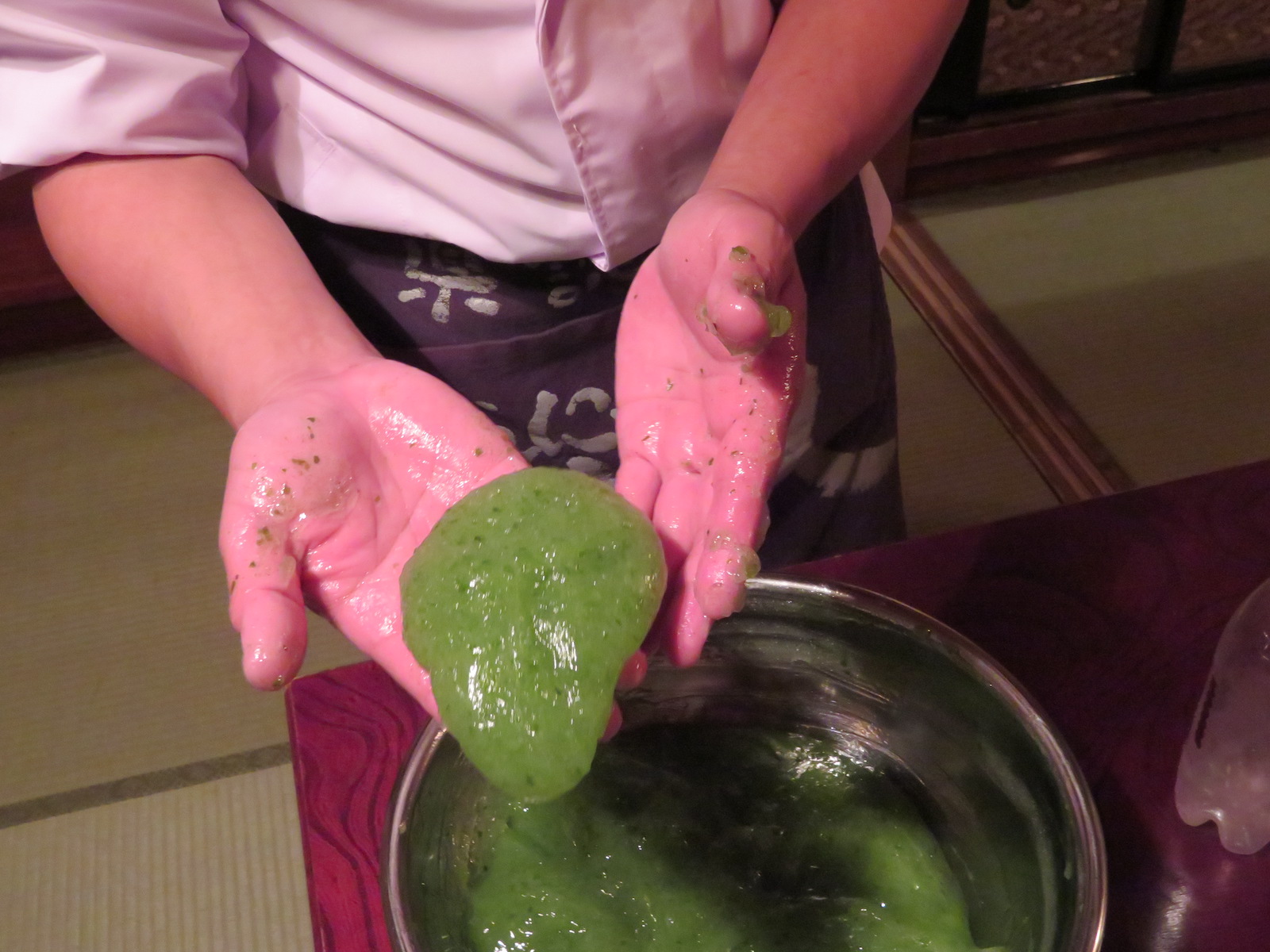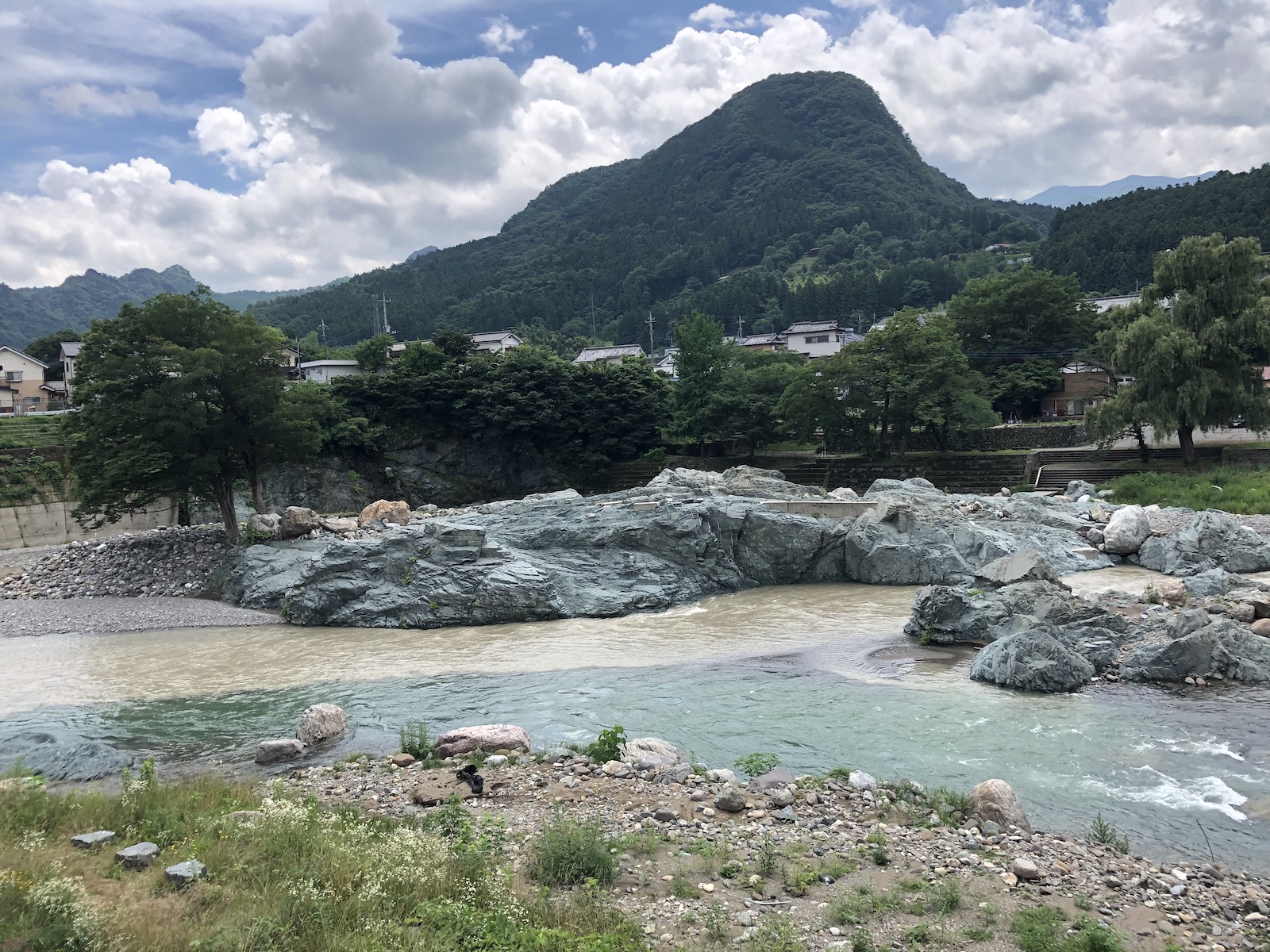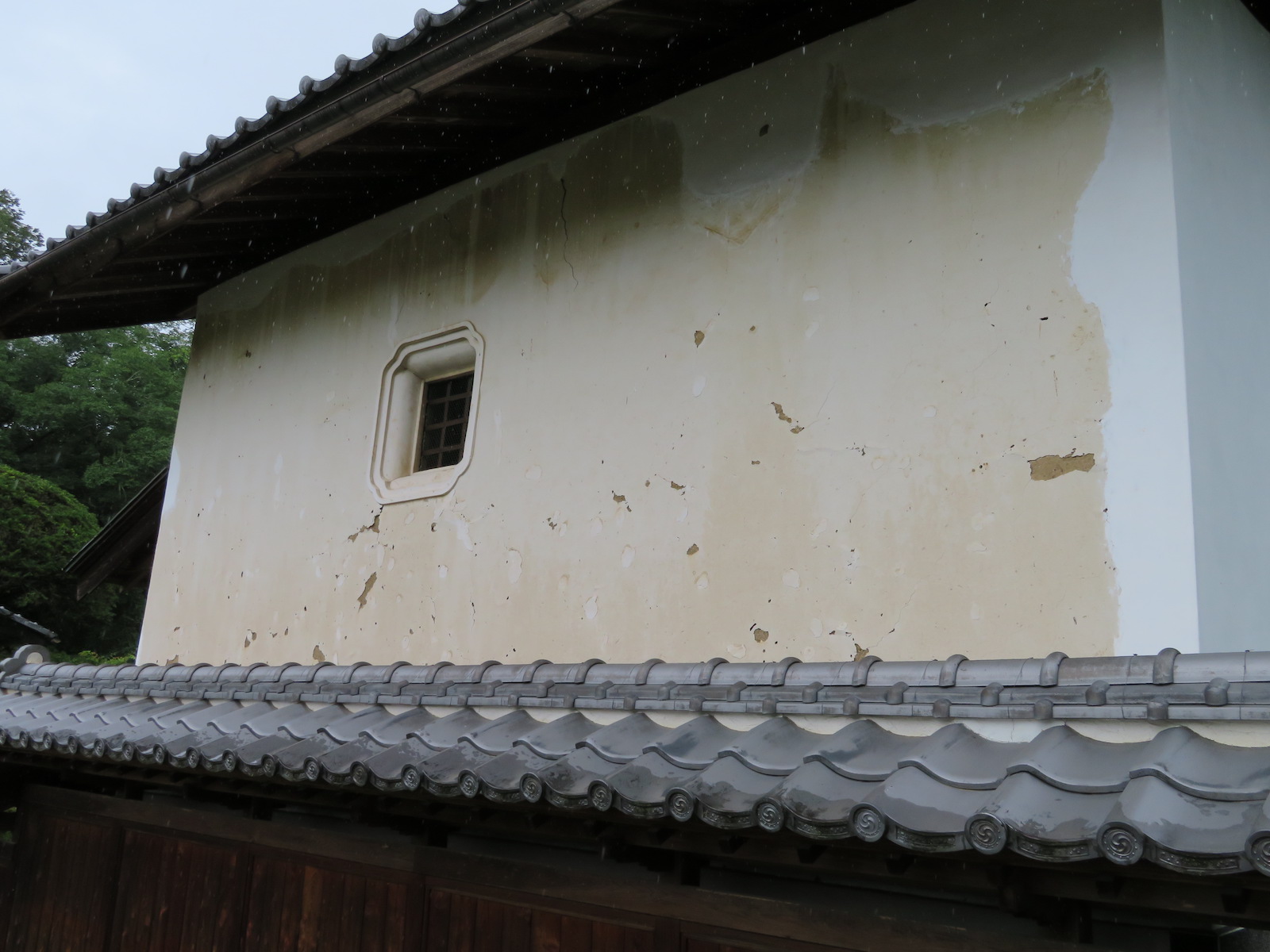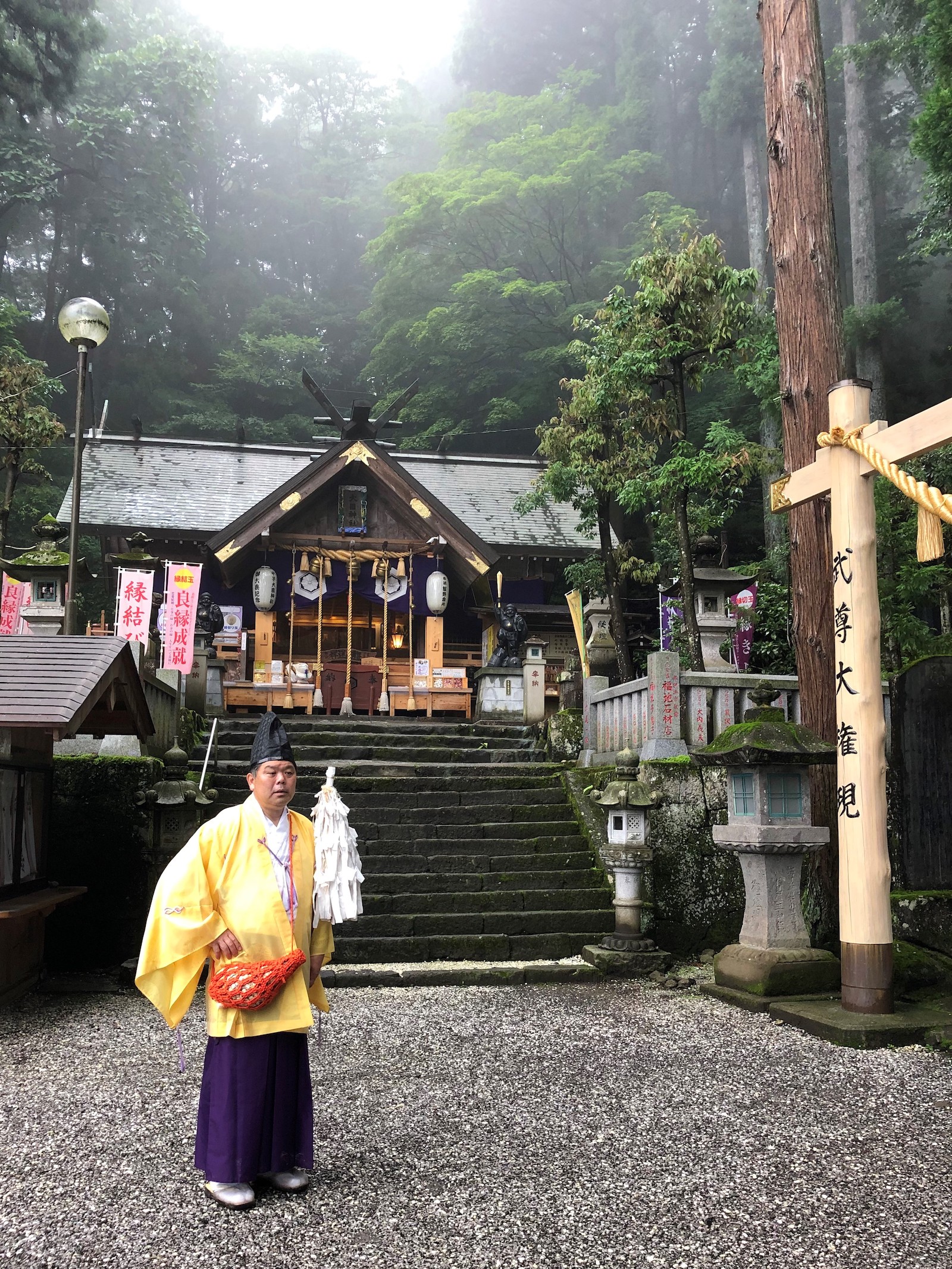Tokyoites and travelers based in Tokyo are often on the lookout for day trips or overnight excursions out of the capital. And in these days of social distancing to avoid contagion, interesting places off the beaten track are especially popular.
Shimonita, in the far west of Gunma Prefecture, is just such a place. The quiet little town is situated in a scenic valley with a number of unique geological features well worth exploring. It is also home to one of the four sites included in the UNESCO World Heritage listing titled “The Tomioka Silk Mill and Related Sites”. It takes roughly two hours to reach Shimonita from Tokyo station by Shinkansen and local train (change at Takasaki) or by private car, making it a great destination for a weekend or other overnight get-away.
The geology around Shimonita is so unusual that the entire area has been designated as a Geopark. Geoparks are areas with distinctive geological features of scientific significance combined with beautiful landscapes and interesting human history. In Japan there are 34 Japanese Geoparks and 9 UNESCO Global Geoparks.
Shimonita is the konnyaku capital of Japan. Konnyaku, in its edible version, comes as a firm, gelatinous block, or cut into noodles. A health food that aids in digestion and detoxification, it’s also very low-cal. Konnyaku is processed from the bulbous root of Amorphophallus konjac, sometimes known as devil’s tongue. There were once several factories producing konnyaku in Shimonita and, although most of the factories are now located further down the valley, the plant remains a significant part of agriculture in this area, which is not conducive to growing grain crops such as rice.
There is even a studio offering a 90 minute hands-on konnyaku-making experience in the town. (Weekdays only; phone 0274-82-3206 or email info@shimonitatown.com in Japanese to make a booking.)

Shimonita’s other agricultural specialty is the Shimonita-negi, a very distinctive type of leek that is only available fresh for a limited period in the middle of winter. Visitors at other times of the year can still see ample fields of the crop while out hiking. Thicker and shorter than other leek varieties grown in Japan, the Shimonita-negi is also sweeter than most. Various products made with Shimonita-negi, ranging from negi-infused miso paste to negi-flavored Kaki-no-tani, are available at souvenir shops.
Shimonita’s real treasure is its geology. Shimonita sits at the northeast end of the Median Tectonic Line, a fault line that extends under part of Honshu, across the top of Shikoku and on to the northeast corner of Kyushu due to the subduction of the tectonic plate of the Pacific Ocean under the tectonic plate carrying the Asian continent. Just a couple minutes’ walk from the train terminal is a viewing area where visitors can have an overview of the impact of this situation. Two rivers flow together at this point, the material on the river bottoms resulting in different water colors. Above the river, a panorama of mountains unfolds. These are what geologists call “klippe” or rootless mountains. They are all that is left of an eroded 80 million year old land mass sitting on a 270 million year old land mass.

From this vantage point, also notice Aoiwa Park, the tumble of greenish boulders on the other side of the river below the bridge. This is an exposed section of the oldest, and densest, geologic strata. Find your way to the bridge and cross for a closer look. Be sure to check the Geopark signboards along the way. Although they contain limited English, the illustrations are enlightening.
From the same side of the river as Aoiwa Park, visitors can strike out on hikes to Shimonita Onsen, the Shimonita Museum of Natural History, or ascend the Nanmoku River to several places where distinctive geological strata are visible. Maps are available at the train station or at the tourist office in the Michi-no-Eki.
The old town itself has plenty to explore, while exuding an air of forgotten in time. Look for old konnyaku factories both above and below the bridge. Konnyaku production requires lots of water, so the factories were often located along the river.
The principal shrine of the town is Suwa Shrine, just a short walk from Shimonita Station. While this is not a major shrine, aficionados of wood carving could spend hours here examining the elaborate carvings adorning this 400-year-old shrine.

The shrine backs onto the Kabura River near where exposed rock layers include fossils of crabs. Take advice from a local before trying to find this spot, as it is inaccessible if the river is high (eg, after rain).
About a kilometer upriver from Suwa Shrine is the Shimonita History Museum, a small local museum packed with exhibits (limited English) on Shimonita’s long human history, including Jomon and Yayoi relics tens of thousands of years old, as well as displays on more recent activities, such as iron mining/smelting, silk worm cultivation, and the 1864 Battle of Shimonita, a skirmish between Shogunate troops and a rebel group from Mito, known as the Tengu Party, who were passing through on their way to Kyoto. (For those not familiar, there was a lot of upheaval in Japan in the waning days of the Shogunate, when the West was demanding that Japan open itself to trade.) Take the local road below the museum, rather than the highway, to see some relics of that battle, including a stone marker and a warehouse bearing bullet holes.

Even visitors who arrive by train can access the sights of the area farther out of town. The local taxi, just steps from Shimonita Station, offers two to four hour packages visiting various sites and ranging in price from 4,000 to 10,000 yen, depending on the course. For two to four persons traveling together, this can be a pretty good deal.
Topping the list is the World Heritage-listed Arafune Cold Storage site, 29 kilometers from the center of Shimonita. In the days before refrigeration, stone structures were built on the mountainside to channel cold air dropping through a massive landslide of boulders, creating cold storage. Silk worm eggs from around the country were stored here to delay the eggs’ hatching until needed, all part of the silk worm cultivation that made Japan the world’s largest producer of silk in the late 19th/early 20th centuries. Even in summer, the cold air emerging from gaps in the boulders is never above 5 C, a geologic phenomenon at least as fascinating as the klippe mountains.

Higher up the mountain but just a few minutes from Arafune Cold Storage is the Kozu Bokujo, a 120 year old dairy farm, the first of its kind in Japan. Time your visit for around 1:00 pm to see the cows parade in from their grazing to be milked. They find their way without any human intervention. Or opt for a butter churning experience. There is also a restaurant specializing in yakiniku, making this a good lunch stop. The calf nursery, a petting zoo with sheep, goats and bunnies, and a small museum-like display on the history of the farm round out the sights here.

Mt Myogi is another major sight of Shimonita. It has spectacular rock formations, remnants of a volcanic eruption some 4 to 6 million years ago. Erosion has left several natural arches that are included in a hiking course finishing at Nakanotake Shrine, at the foot of Todoroki-iwa. (Note: sometimes the trail is closed due to dangerous conditions.) Todoroki-iwa is a needle of stone towering above the shrine, sacred since prehistoric times. Nakanotake Shrine is an ornate complex of a few shrines and a 20-meter statue of Daikokuten, the god of prosperity. Even if the hike isn’t possible, the shrine is worth a visit.

Visitors need more than just a day to see everything. There are several accommodation options in Shimonita as well as at other stations on the Joshin Train Line. I can recommend Tokiwakan, a traditional inn just across from the taxi near Shimonita Station. It is a family business established in 1912. The fourth-generation proprietress, having been an exchange student in the U.S., is very comfortable speaking English to her guests and giving advice on what to see and do.
Vicki L Beyer, a regular Japan Today contributor, is a freelance travel writer who also blogs about experiencing Japan. Follow her blog at jigsaw-japan.com.
© Japan Today Take our user survey and make your voice heard.
Take our user survey and make your voice heard.















1 Comment
Login to comment
JohnBecker
It looks like an interesting place to visit!